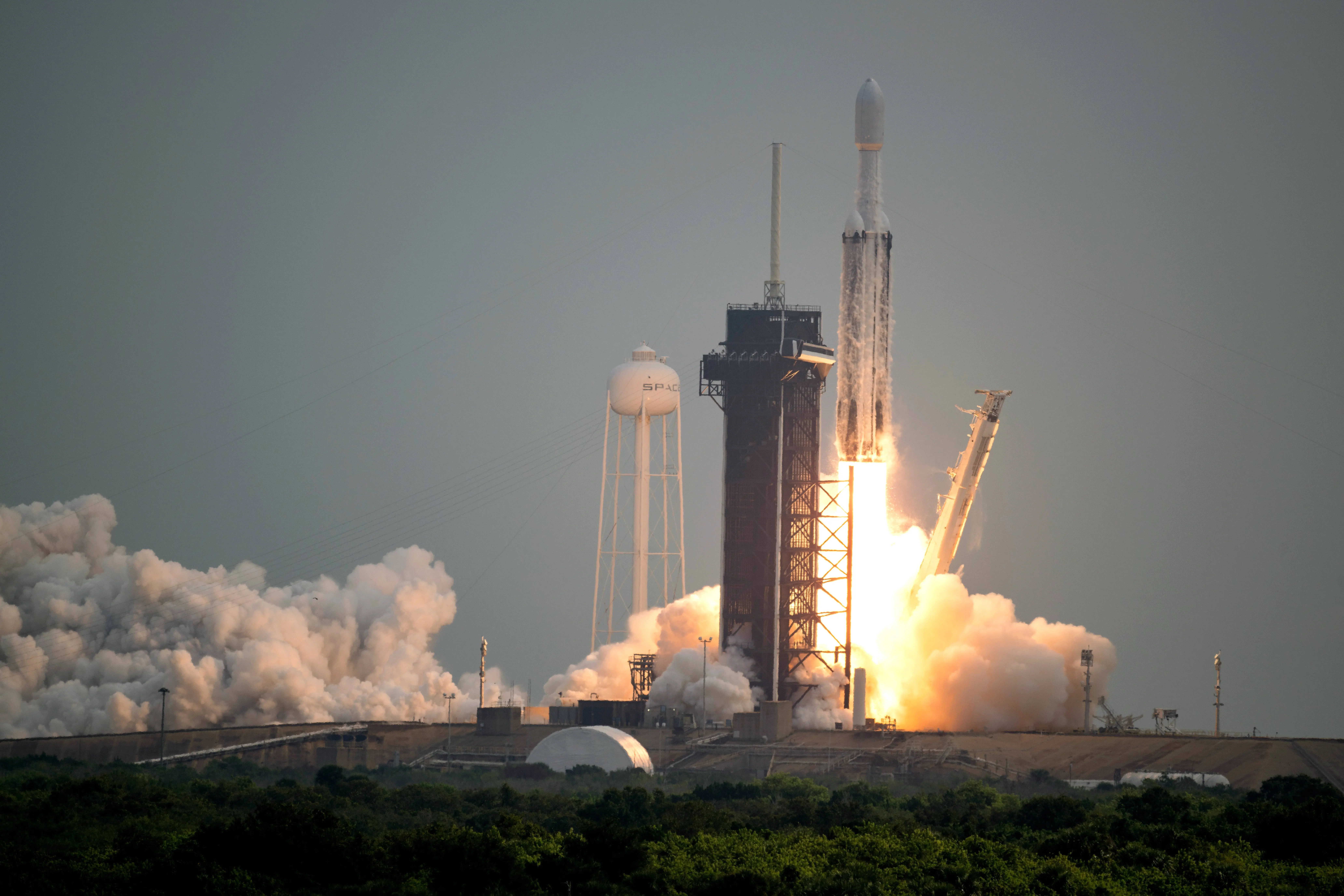Strange light spotted by astronauts in orbit — NASA explains what really happened
-
 CAPE CANAVERAL, FLORIDA - OCTOBER 13: In this handout provided by NASA, a SpaceX Falcon Heavy rocket with the Psyche spacecraft onboard is launched from Launch Complex 39A, October 13, 2023 at NASA's Kennedy Space Center in Cape Canaveral, Florida. NASA's Psyche spacecraft will travel to a metal-rich asteroid by the same name orbiting the Sun between Mars and Jupiter to study its composition. The spacecraft also carries the agency's Deep Space Optical Communications technology demonstration, which will test laser communications beyond the Moon. (Photo by Aubrey Gemignani/NASA via Getty Images)
CAPE CANAVERAL, FLORIDA - OCTOBER 13: In this handout provided by NASA, a SpaceX Falcon Heavy rocket with the Psyche spacecraft onboard is launched from Launch Complex 39A, October 13, 2023 at NASA's Kennedy Space Center in Cape Canaveral, Florida. NASA's Psyche spacecraft will travel to a metal-rich asteroid by the same name orbiting the Sun between Mars and Jupiter to study its composition. The spacecraft also carries the agency's Deep Space Optical Communications technology demonstration, which will test laser communications beyond the Moon. (Photo by Aubrey Gemignani/NASA via Getty Images)A team of astronauts on board the International Space Station (ISS) recently witnessed a weird light flashing in the vastness of space. The incident raised curiosity and questions among the crew as well as on social media following the revelation about the incidence. NASA has now revealed what made the strange occurrence, explaining that it was not an indication of any unknown or secret object.
What the astronauts observed
The astronauts initially spotted the light while passing over Earth on a recent flight. Based on their observation, a brief, white flash was visible close to the planet's horizon and seemed to throb before it diminished. It lasted a matter of seconds, but it was bright enough to strike some of the crew members who were keeping watch at that time over Earth's atmospheric and surface movements.
Although such encounters are not unheard of, the incident was unusual due to how distinctly the glow stood out in the darkness of space. Photos and video were taken by astronauts to be sent to NASA's ground staff for investigation and study.
NASA’s explanation of the mysterious light
NASA later confirmed that the light seen from orbit was a large lightning discharge from a powerful storm system over the Pacific Ocean. The event was described as a type of transient luminous event—a rare kind of lightning that occurs above thunderstorms, in the upper layers of the atmosphere.
These events, which include sprites, blue jets, and elves, are difficult to spot from the ground because they happen high above the clouds. However, from space, they appear as glowing flashes that can look mysterious to observers unfamiliar with their behavior. NASA noted that the ISS crew happened to be in the right place at the right time to witness one of these rare atmospheric displays.
The space agency emphasized that these phenomena are natural and pose no danger to astronauts or spacecraft. NASA scientists have been studying transient luminous events for years to understand how they interact with Earth’s weather and climate systems.
Understanding rare atmospheric phenomena
Lightning that extends into the upper atmosphere has intrigued scientists for decades. These bursts can extend dozens of kilometers into the air and emit bursts of energy lasting only milliseconds. The information gathered by NASA and global scientists assists scientists in learning more about the connection between thunderstorms and Earth's upper atmosphere. Astronauts get a distinct perspective of such events from space.
The International Space Station, which is in orbit around 400 kilometers from Earth, passes over massive storm systems on a routine basis, giving a clear glimpse of activities that would not be seen otherwise on the surface. Onboard instruments tend to record these instances for analysis, adding valuable data to existing studies.
NASA's ongoing research
NASA affirmed that it would utilize information from this latest sighting to enhance its knowledge of high-altitude lightning. The agency's Earth monitoring missions already have instruments on board for observing atmospheric energy bursts, assisting researchers in learning how electrical activity impacts the weather and radiation balance on the planet.
Space agencies have also worked together in recent years with ground-based observatories to film the same events from different angles. Such collaborations have broadened scientific understanding of how lightning joins various layers of Earth's atmosphere.
While the light was a cause of wonder for most web viewers, such occurrences are more common than people know, according to NASA.
They just seem uncommon because they are best observed from space. For astronauts on the ISS, seeing flashes like this is a reminder of the dynamic and ever-changing nature of Earth's weather patterns.
NASA concluded that although the appearance might have seemed enigmatic at first, the cause is due to normal—though extraordinary-looking—natural forces operating within our planet's atmosphere.
TOPICS: NASA
- NASA’s MAVEN spacecraft detects signs of hydrogen coming from comet 3I/Atlas as scientists study the interstellar visitor closely
- NASA explains why the new HiRISE image of interstellar comet 3I/Atlas looks fuzzy while amateur astronomers capture clearer views
- Avi Loeb questions NASA’s 3I/Atlas press conference as he says “obvious facts” may be hiding bigger truth
- ISRO captures rare and close-up image of fast-moving interstellar comet 3I/Atlas as scientists continue tracking its path